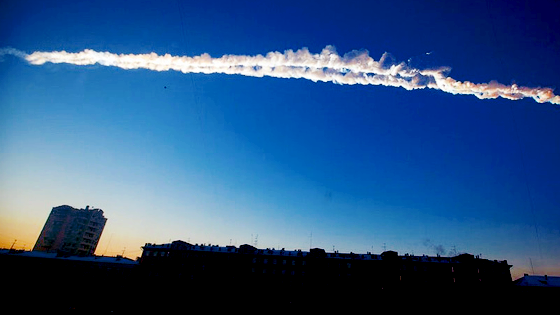RUSSIAN METEOR was largest in more than a century at over 10,000 tons.
That Russian meteor that struck all over their face last week? Way bigger than initially suspected. Like, I can’t do the math, but a lot. In fact, the energy that was released was more than 30 times than that of the atomic bomb detonated over Hiroshima. G’damn.
The Verge:
New estimates reported by NASA indicate that the meteor that entered Earth’s atmosphere last week — resulting in an explosion near Chelyabinsk, Russia — was the largest to do so in more than a century. While early estimates placed the 55-foot meteor in the 10-ton range, the actual size was closer to 10,000 tons, and the energy released during the event was in the neighborhood of 500 kilotons. As The Wall Street Journalpoints out, that’s more than 30 times the size of the atomic bomb detonated over Hiroshima. The previous largest meteor impact of this kind was the 1908 event in Tunguska, Siberia.
The Voice of Russia reports that a total of 1,200 people have been injured and 3,724 buildings damaged by the impact, with a combined 200,000 square meters (2.15 million square feet) of shattered glass resulting from the shockwave. Damage is estimated to total 1 billion rubles, or about $33 million.
Paul Chodas of NASA’s Near-Earth Object Program Office stated that “we would expect an event of this magnitude to occur once every 100 years on average,” which means we’re probably in the clear for a little while. That’s good, since NASA’s new meteor-detecting ATLAS telescopes won’t be fully operational until 2015.
Meanwhile in Chelyabinsk, the hunt is on for fragments of the meteor. The CBC reportsthat a team from Russia’s Urals Federal University has so far recovered 53 pieces, all less than a centimeter long, proving that, aside from its size, the rock was otherwise unspectacular. The meteor was a chondrite, the most common type, with an iron content of about 10 percent.




